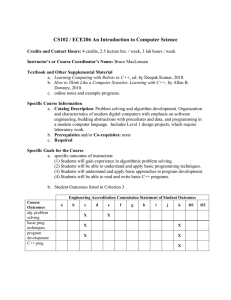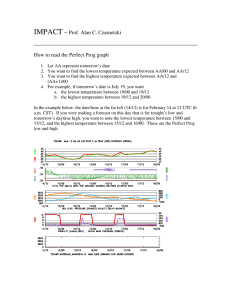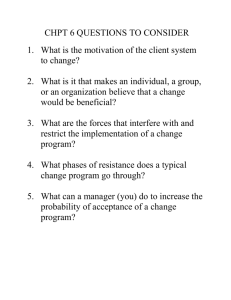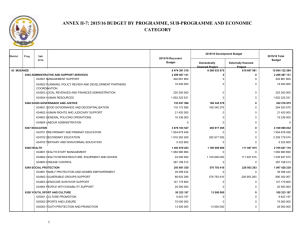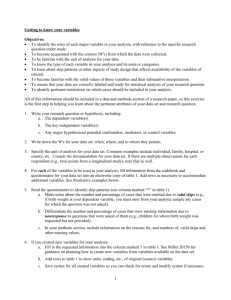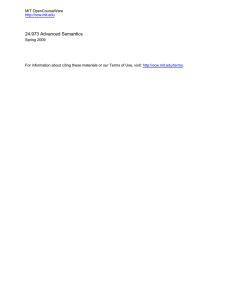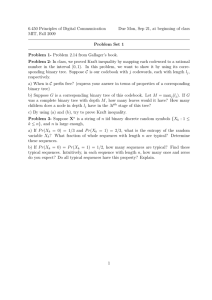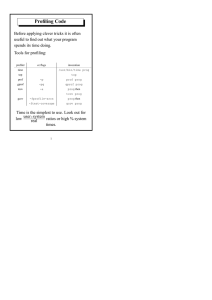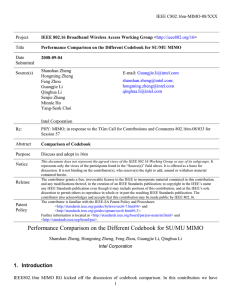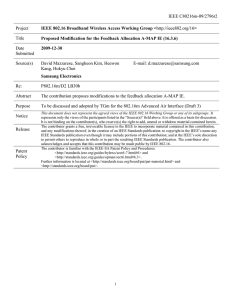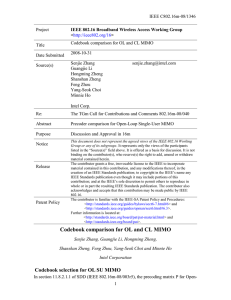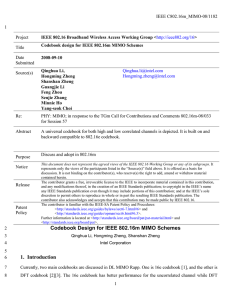11.220 Quantitative Reasoning & Statistical Methods for Planners I
advertisement
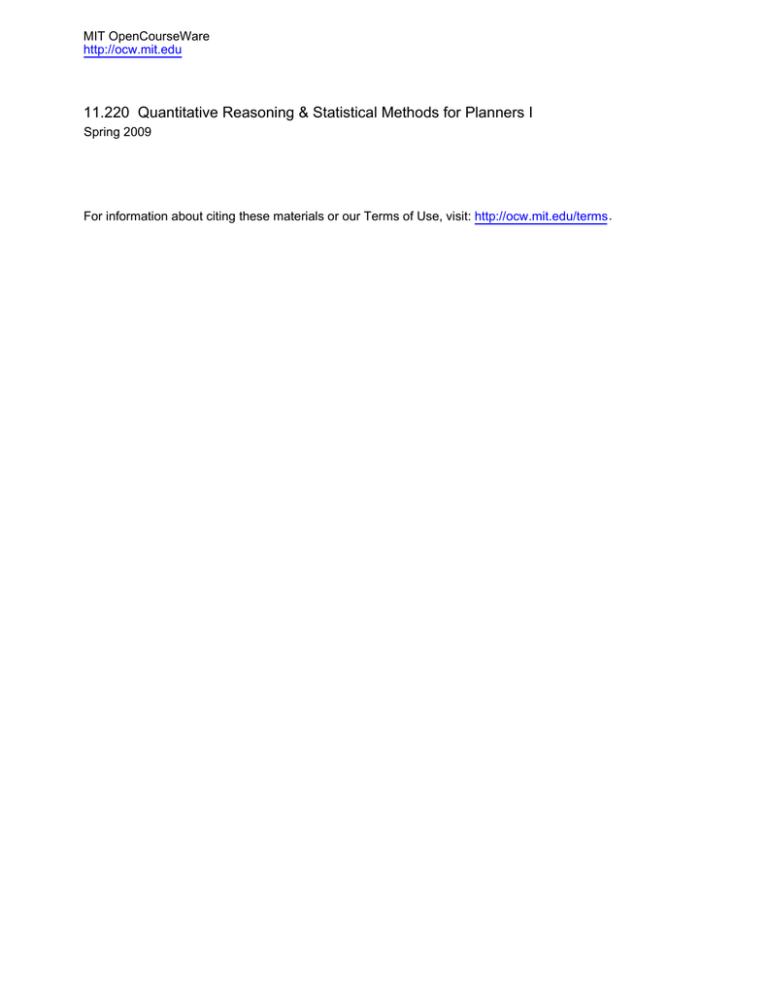
MIT OpenCourseWare http://ocw.mit.edu 11.220 Quantitative Reasoning & Statistical Methods for Planners I Spring 2009 For information about citing these materials or our Terms of Use, visit: http://ocw.mit.edu/terms. 1 11.220 Quantitative Reasoning and Statistical Methods for Planning Mar 6th, 2009 Computer lab #2 Modify data: add labels, create new variables To use flash drive on Linux system type "add consult" in the terminal type "tellme root" and pay attention to the password it gives you type "attach-usb" and then enter that password The path will be "/mnt/usb/foldername" type "detach-usb", and give the same password to detach f-drive STATA commands used in today’s class log Keep a log file to track your operation and outcomes codebook Show codebook information for file label data Apply a label to a data set order Order the variables in a data set label variable Apply a label to a variable label define Define a set of a labels for the levels of a categorical variable label values Apply value labels to a variable encode Encode string into numeric variable list Lists the observations rename Rename a variable recode Recode the values of a variable notes Apply notes to the data file generate Creates a new variable replace Replaces one value with another value egen Extended generate - has special functions that can be used when creating a new variable Scripts in the real Command Window cd E:\MIT\09Spring\STATALAB\DATA directory) use hs0, clear log using log1, text replace Note: STATA is case-SENSITIVE! (change this part to your own local /// label the variable and value of “schtyp” order id gender label variable schtyp "The type of school the student attended." label define scl 1 public 2 private label values schtyp scl codebook schtyp list schtyp in 1/10 list schtyp in 1/10, nolabel /// create a new numeric version of the string variable “prgtype” 2 11.220 Quantitative Reasoning and Statistical Methods for Planning encode prgtype, gen(prog) label variable prog "The type of program in which the student was enrolled." codebook prog codebook prgtype list prog in 1/10 list prog in 1/10, nolabel /// replace the missing value in science score list science if science == . recode science . = 50 list science if science == 50 notes science: missing values are replaced by 50 notes rename socst social /// change the name of socst to social ///generate a new variable to show the total score gen total = read + write + social summarize total ///recalculate the value for total score to include all classes replace total = read + write + math + science + social summarize total label variable total "total score" codebook total ///Change the scores into grades recode total (0/150=1 F) (150/200=2 D) (200/250=3 C) (250/300=4 B) (300/500=5 A), gen(grade) codebook grade label variable grade "combined grades for all classes" list read write social math science grade in 1/10 list read write social math science grade in 1/10, nolabel ///Create standardized version of variables egen zread = std(read) summarize zread list read zread in 1/10 ///Calculate subgroup means and assign to each observation egen rmean = mean(read), by(race) list read race rmean in 1/10 egen mread = median(read), by(prog) list read prog mread in 1/10 save hs1,replace Exercises 1: Label the value of gender, male as 0, female as 1. List your results. 2: Calculate the total score of read, write and social, then change the scores into grades using the following rule: (0/80=0 F) (80/110=1 D) (110/140=2 C) (140/170=3 B) (170/300=4 A) List your results. *Note: With reference to Bruin, J. 2006. New test: command to compute new test. UCLA: Academic Technology Services, Statistical Consulting Group.
